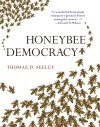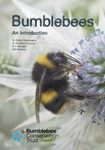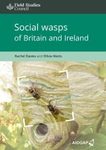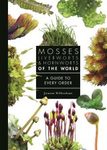"Dr. Seeley is an engaging guide. His enthusiasm and admiration for honeybees is infectious. His accumulated research seems truly masterly, doing for bees what E.O. Wilson did for ants."
– Katherine Bouton, New York Times
"Although the details are complicated, Seeley's explanations are remarkably clear. The text is abundantly illustrated with figures that are cleverly simplified in comparison to how they might appear in scientific journals. For readers who may be less passionate about the particulars of honeybee life, Seeley also reveals parallels between the way swarms make decisions and how the human brain sorts through conflicting neuron signals to reach decisions. He also provides a few pointers on how rules of honeybee democracy may be applied to decision-making in human groups, with minimal dependence on a leader, vigorous competition among a diversity of viewpoints, and a method for determining a majority-based resolution."
– May Berenbaum, Times Literary Supplement
"Seeley's work – extended over years and summarized clearly and engagingly here – is a model of biological research that builds bridges to the social sciences, and to the practical arts of institutional design for humans."
– Adrian Vermeule, New Republic's The Book
"[S]plendid."
– John Whitfield, Nature
"[E]ngaging and fascinating [...] Seeley writes with infectious enthusiasm [...] Honeybee Democracy offers wonderful testament to his career of careful investigation of a remarkable natural phenomenon. The breadth and depth of the studies reported in it should inspire all students of animal behavior."
– Science
"To illustrate bee decision making, Seeley details how swarms choose a new home. Seeley presents his material with charm, and the bees' system of house-hunting becomes surprising and awe-inspiring."
– Science News
"In Honeybee Democracy, Seeley carefully narrates his many seasons of experiments using plywood next boxes that could be moved and modified at will. He discovered what bees like in a home, how scouts measure the dark interiors of these boxes and most of all, how the swarm 'votes' to decide which nest to occupy [...] Honeybee Democracy is a brilliant display of science at work, with each experiment explained and illustrated."
– New Scientist
"[I]t is a book well worth studying. Within its pages we find out about an important aspect of the life of the honeybee (with some practical implications for beekeepers), how researchers work both in the field and in the laboratory, the objective way in which the experiments are carried out but, most of all, how in the seeking of a new home bees provide us with a model of true democratic behaviour which any group could use to its advantage. Indeed, the last chapter alone, 'Swarm Starts' would make an excellent minibook for anyone who is involved in decision making no matter what position they hold."
– Beekeepers Quarterly
"Rather than presenting a dry review of his findings, Seeley intertwines them with his thought processes, anecdotes and generous appraisals of students and fellow scientists. His skill in writing a book with so much science in such simple language is admirable. Even a non-beekeeper can understand what he is trying to convey. The photographs are beautiful and the illustrations elegant."
– Zachary Huang, Times Higher Education
"The year's most enchanting science book."
– Financial Times (FT Critics Pick 2010)
"Honeybee Democracy, by Thomas D. Seeley, will teach you everything you ever wanted to know about one of the world's most beneficial insects [...] Seeley, a biologist and beekeeper, presents his excellent understanding of what makes the bees' society work for the survival of the species."
– Washington Post
"His argument is seductive [...] [R]eading Honeybee Democracy is a delightful way to spend an evening."
– National Post
"[O]ne cannot help but be inspired by the beauty of Seeley's hypothesis-driven experimental work. The book is beautifully presented with illustrations, photographs, charts and anecdotes, and succeeds in making the whole field of investigation accessible to the non-specialist [...] [O]ne is swept away by Thomas Seeley's enthusiasm for a subject that is clearly his passion."
– Philippine Rudolf, British Politics and Policy
"Seeley shares his 35-plus years of experience working with bees. He presents a very interesting treatise about his research (as well as that of other scientists) on these eusocial insects and their fast and accurate group decision making when choosing the colony's new dwelling place. This very well-written book is also beautifully illustrated, highly informative, and educational."
– Choice
"[T]his work makes an important contribution to a growing body of literature in disciplines removed from political science or sociology (such as biology in this case). It is felt that this may help us to understand what this enigmatic term or concept 'democracy' might actually be. To finish, this book comes highly recommended to any interested in learning about a new non-human democratic typology."
– Jean-Paul Gagnon, Journal of Democratic Theory
"Princeton University Press is to be congratulated in producing a book that is great value for the money and beautifully produced. The author is to be congratulated in writing a book that in its content and voice will reach and satisfy both scientists and nonscientists, both bee people and those not yet bitten (or stung). Honeybee Democracy is both easy and enjoyable to read."
– Francis L. W. Ratnieks, Animal Behaviour
"Seeley writes in an engaging and entertaining style. He also manages to explain complicated facts in easily understandable prose without compromising on the scientific information, and his comparisons with human behaviour and democratic practices are telling [...] The author aimed to bolster, 'an appreciation of these little creatures'. Mission accomplished. It's hard to not be fascinated by the, 'little six-legged beauties.'"
– Uli Ernst, Lab Times
"[Honeybee Democracy is] an exceptional combination of memoir, entomology, and political philosophy."
– Carl Zimmer, DiscoverMagazine.com's The Loom blog
"Reading Tom Seeley's book will give you an understanding of bees which will help your beekeeping [...] Like all the author's books and papers, this one is worth a place in your bee library."
– Adrian Waring, Bee Craft
"Honeybee Democracy is a wonderful book, beautifully written and illustrated, about humanity's greatest friend among the insects. The honeybee is important not only for its role in agriculture but for what it has taught us concerning the fundamental nature of complex social organization. Seeley, its leading authority, here presents it to a broad readership, with scientific exactitude written in lyrical prose."
– Edward O. Wilson, coauthor of The Superorganism
"From bees to brains, Seeley takes us on a remarkable scientific journey of discovery. Through a landmark series of studies, he explores how honeybee swarms decide where to relocate, and from this fascinating tale of life or death, he gives us deep insights into how social systems can make good choices without global information or direct leadership. This book is a masterpiece of intense investigation, careful thought, clear writing, and love for one's subject."
– John Miller, Carnegie Mellon University and the Santa Fe Institute
"Seeley presents an engaging story of honeybees, hives, and scietific investigators to illustrate how choices are made through self-organization in hives, human brains, and even town meetings. Honeybee Democracy offers practical lessons told through vivid language."
– Jeffrey D. Schall, E. Bronson Ingram Professor of Neuroscience, Vanderbilt University
"Honeybee Democracy is a sheer delight. Seeley, a superb scientist and a gifted communicator, shares fascinating learning and lessons from his splendid work with these remarkable insects. His enthusiasm is infectious and he persuasively shows that there is a great deal humans can gain from studying swarm smarts. I love this book and recommend it highly."
– Michael J. Mauboussin, author of Think Twice: Harnessing the Power of Counterintuition
"Honeybee Democracy tells one of the great stories of biology and is pertinent to general readers everywhere."
– Bernd Heinrich, author of Winter World: The Ingenuity of Animal Survival
"Honeybee Democracy is a pleasure to read. Seeley conveys the bee scientist's love and respect for the honeybee, the ingenuity necessary for uncovering the secrets of honeybee life, and the fun that is had in doing so. In an era increasingly dominated by big science and its technology, this book reminds us that a common insect and a few ingenious researchers, armed with equipment obtainable from the local shopping mall, can lead us into a remarkable world."
– Francis Ratnieks, University of Sussex

































